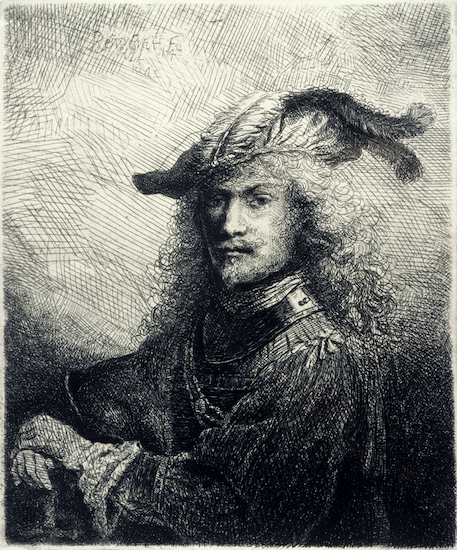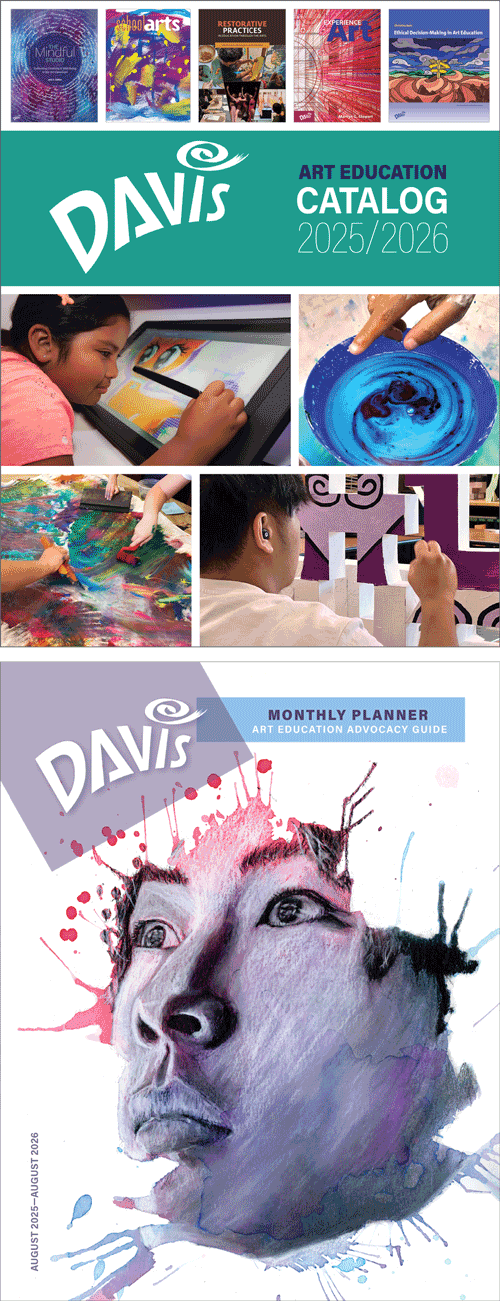Artist Birthday: Ferdinand Bol
Ferdinand Bol was one of the outstanding history, portrait and still life painters to emerge from the studio of Rembrandt (1606–1669). In addition, he carried on the excellent development of the engraving and etching printmaking media which Rembrandt brought to fruition during the mid-1600s.
Artist Birthday for 24 June: Ferdinand Bol (1616–1680, Netherlands)
Ferdinand Bol, born in Dordrecht, became a leading painter in Baroque Amsterdam.
 |
| Ferdinand Bol, Portrait of an Officer, 1645. Etching on paper, 13 x 11 cm. © 2025 Philadelphia Museum of Art. (PMA-2335) |
Rembrandt was a skilled teacher. That is evident not only in Bol's paintings, but also his etchings. Bol, whose work was often confused with Rembrandt's in the past, produced only 16 known etchings between 1642 and 1651. It was a small but significant part of his body of work. Bol's work reflects the style of Rembrandt's etchings from the 1630s and 1640s, and reflect a sophisticated use of burin and drypoint needle in creating expressive prints.
One of the most expressive aspects of Bol's etchings (and, by extension, Rembrandt's) is the sophisticated manipulation of hatching and cross hatching (the use of parallel lines and parallel lines crossing other parallel lines) to define sculptural form and dramatic lighting effects. In Portrait of an Officer, Bol's hatching is almost gestural in the lighter areas, and brilliantly executed by varying the spaces between the parallel hatching lines, with the closest-together cross hatching defining subtle nuances in the dark (probably black) clothing, and the far apart upper hatching lines suggesting ambient light.
Baroque is a term used to define art of the period (ca. 1600–1750) in western Europe that followed the Renaissance (ca. 1400–1600). No one style or set of stylistic principles define this period. The word comes from barocco, a Portuguese word for an irregular pearl. Art critics in the 1800s coined the term to disparage some of the unstructured, over-ornamented, theatrical and grotesque art of the post-Renaissance period.
During the Baroque period, a variety of stylistic trends co-existed, and often intermingled. The major trends were naturalism (bourgeois), classicism and drama. After domination by the Spanish since 1516, the Dutch provinces declared independence from Spain in 1581 and thus established the Dutch Republic. While the southern Lowlands remained dominated by Baroque art in Catholic countries, the provinces of the Netherlands were Protestant. Dutch art of the Baroque period maintained the same ideals of naturalism and detail as Renaissance painting in the North.
In contrast to Catholic countries, Dutch artists developed their own hierarchy of subjects and styles, reflecting their reformed religion and the absence of a dominating church. While some religious subjects persisted, portraiture, genre scenes, landscape and still life became the predominant arena of Dutch painting. Calvinistic Protestantism swept away any classical, historical or religious subjects, a result of the emphasis on the predominant middle-class culture.
Ferdinand Bol was born in Dordrecht, Netherlands. His earliest training is unknown, but he is thought by some scholars to have studied under Jacob Gerrtisz. Cuyp (1594–1652), Dordrecht's leading painter. In 1635, Bol registered as a schilder (painter), an artist who had completed his training. In 1636, Bol moved to Amsterdam where he became an assistant in Rembrandt's studio, where he worked until 1641. He was the first Dordrecht artist to do so. He quickly adopted Rembrandt's style of tenebrism (sharp contrasts in light and dark), fluid brush work, and highly charged compositions. In 1642, the year of his first dated paintings, Bol established his own studio as an independent artist in Amsterdam.
Bol's work in portraits was especially strong in their resemblance to the master. Like Rembrandt, Bol did many tronies, a category of 1600s Dutch portraiture where faces were painted from living models, but not recognized as individual portraits, but rather as symbolic of facial expressions or characteristics of certain types of people (e.g., Portrait of a Scholar, Indianapolis Museum of Art). He also adopted Rembrandt's penchant for self-portraits both in painting and printmaking. In 1654, an article in Amsterdam named Bol as one of the leading painters of the city. He presumably had many pupils by the 1660s when his workshop was always deluged with commissions. Two of his pupils are known to have been Cornelisz. Bisschop (1630–1674), and Godfrey Kneller (1646–1723) who later became Britain's leading portraitist. Über-wealthy by the 1660s, Bol seems to have retired from painting in 1669, shortly after the funeral of Rembrandt. His last dated paintings are from 1669.

Comments